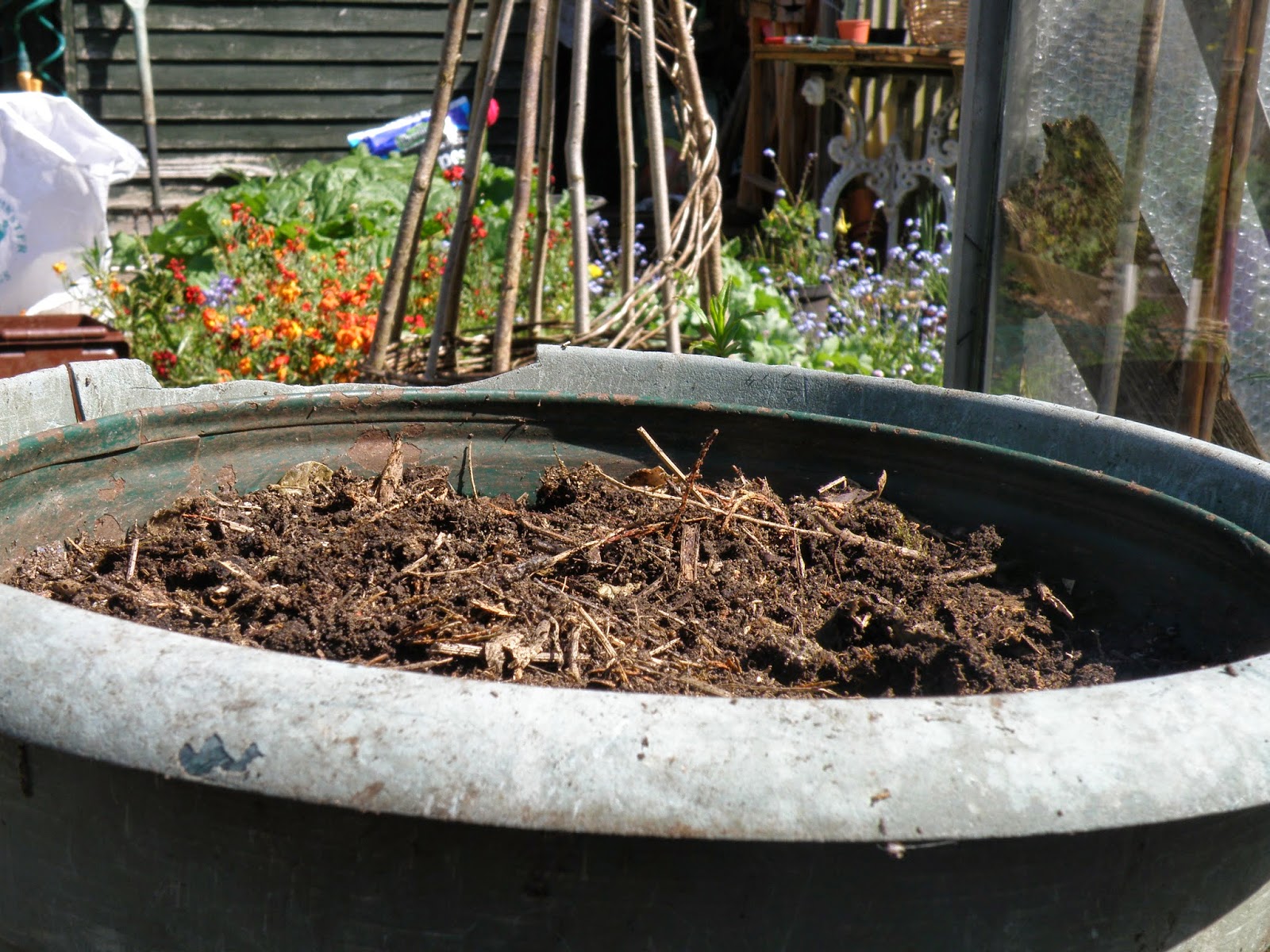I have four compost bins two wooden and two black daleks and I tend to use them in twos. I fill up one with waste and then let it cook for a while until it's partner is full. This takes different lengths of time depending on the time of year. There is much less waste in winter and I am not out there nearly as much so composting slows right down for a few months.
When one bin is ready I dig out the compost. I have to admit that it usually has bits of stick, stone and even plastic in it so this is when I
sieve it.
I saw someone do this once and though he was mad but when you actually do it it is so satisfying and doesn't take that long. You don't do the whole heap at once. Or I don't. The you are left with fabulous friable compost that you want to show off.
This is what I started with:
I use a large garden sieve.
Perched on a large pot ( which has seen better days).
Do this on a table or raised surface to prevent back ache.
Just add a spadeful at at time and push through the sieve. I use my hand. It's best if the compost is not too wet.
This is what you get.
It looks impressive. You have to run your hands through it. It didn't take that long to fill the pot and I was talking to my neighbour for some of the time. I have done inside the greenhouse before on a wet day when I didn't really want to be outside.
All the bits left over can go back in the heap or into the dustbin, depending on what they are. I find bits of twig, plastic, plant labels and stones. I don't know how the stones get in there.
Then I spread it on the garden or store it in bags until I need it.












































